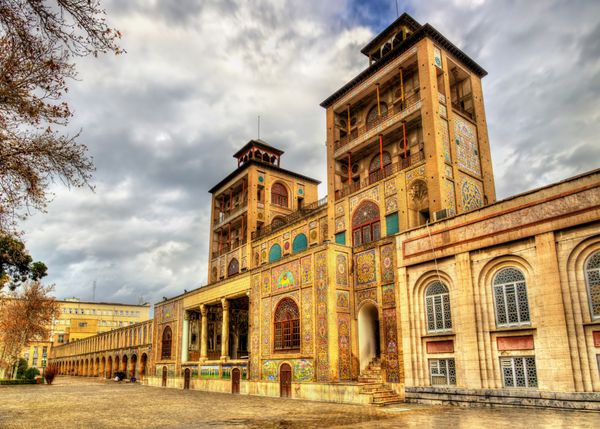Historical Significance:
Golestan Palace is an ensemble of various structures, halls, and gardens with origins dating back to different eras. Its name is derived from the "Golestan Hall," situated in one of the exterior buildings. This magnificent complex was constructed and expanded over centuries, reflecting the transitions in Persian dynastic rule.
Safavid Era: The initial construction of Golestan Palace commenced during the Safavid period. Notable features from this era include the Chahar Bagh (Four Gardens) and Chenarestan. While these gardens were established during the reign of Shah Abbas I, the original royal edifices have not survived.
Zand Dynasty: Among the oldest buildings within the complex are the Marble Throne Iwan (Iwan-e Takht-e Marmar) and Khalvat-e Karimkhani, which belong to the Karim Khan Zand period.
Qajar Era: Golestan Palace underwent significant expansion and renovations during the Qajar dynasty. It served as the primary residence of Qajar kings and was adorned with opulent architectural elements and artistic details.
Pahlavi Dynasty: Following the conquest of the Pahlavi I dynasty, parts of Tehran's arg (fortress), including its fences and various structures, were destroyed. Golestan Palace transitioned into a center for official ceremonies, hosting foreign dignitaries and serving as a residence for presidents and special guests.
Diverse Buildings: Golestan Palace once featured a range of structures, including the Interior Edifice (Emarat-e Andaruni), Naseri Dormitory, Khan-e Maghfur Hall, Exterior Edifice (Emarat-e Biruni), Sanduq Khaneh Edifice, and the Royal Rakhtdar Khaneh (Grand Closet), among others.
Present-Day Golestan Palace: Today, visitors to Golestan Palace can explore various buildings, each showcasing distinctive architectural styles and intricate decorations. These include the Marble Throne Iwan, Khalvat-e Karimkhani, the Museum Room (Salam Hall) with its Hoz Khaneh (Pool House), the Mirror Hall, the Ivory Hall (which houses traditional restaurants), the Brilliant or Ceremonial Hall, a library, Shams-ol Emareh Edifice, the Windproof Edifice with its spacious Hoz Khaneh, the Diamond Hall, Abyaz Palace, and Chādor Khaneh.
Repurposing and Preservation: The palace has been thoughtfully repurposed to serve various functions, including ethnography museums, spaces for preserving royal artifacts, libraries, and administrative offices. This adaptive reuse ensures that Golestan Palace continues to play a vital role in contemporary times while preserving its historical significance.
Golestan Palace is not only a historical treasure but also a UNESCO World Heritage Site. It stands as a living testament to Iran's vibrant history and culture, making it a must-visit destination for those interested in Persian heritage and architectural splendor. Visitors can immerse themselves in the grandeur of the past while appreciating the palace's enduring beauty and cultural importance.


